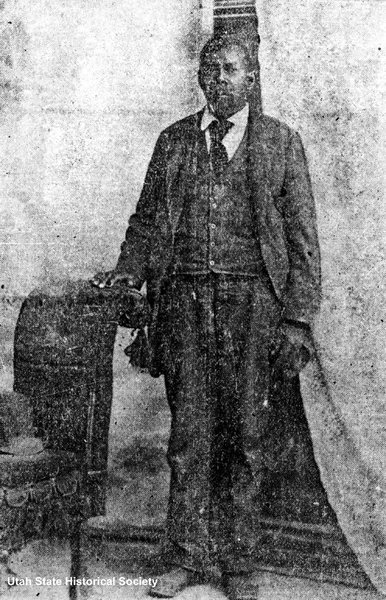Dublin Core
Title
Description
Slavery of African-Americans in Utah began with the settlement of Mormon pioneers in 1847 and lasted for 15 years until the practice was made illegal in 1862.
Three slaves, named Green Flake, Hark Lay, and Oscar Crosby, came west with the first Mormon pioneer company in 1847. According to some reports, it was Green Flake who drove the wagon that brought Brigham Young into the Salt Lake Valley.
At the time, the LDS Church had no official stance regarding slavery, and the views of its leaders reflect the ambivalence of the country during this time. Joseph Smith wrote in 1836 that slaves owed their owners obedience, but also supported abolition during his 1844 presidential campaign. Brigham Young declared slaveholding to be a practice ordained by God, but was not in favor of creating a slave-based economy in Utah. In 1851 Apostle Orson Hyde said the LDS Church would not interfere in relations between master and slave.
Although slavery of African-Americans was never widespread in Utah, records do document the active sale of slaves, and the Federal Census reports the existence of 26 black slaves in Utah in 1850, and 29 in 1860. Slavery was legal in Utah due to the Compromise of 1850, which created the Utah Territory and declared that its people could decide the slavery issue for themselves. Slaveholding was formally sanctioned by the Utah Legislature two years later in 1852, although the law cautioned against inhumane treatment and stipulated that slaves could be declared free if their masters abused them.
This seeming benevolence – and ambivalence – is misleading, however. While a few people freed their slaves in Utah before required to do so by law, the majority did so only after the US Congress abolished slavery in the Utah Territory during the Civil War in 1862.
Creator
Source
_______________
See Jeffrey D. Nichols, “Slavery in Utah, History Blazer, April 1995, accessed http://historytogo.utah.gov; Ronald G. Coleman, "Blacks in Utah History: An Unknown Legacy," in The Peoples of Utah, ed. Helen Z. Papanikolas (Salt Lake City: Utah State Historical Society, 1976); Dennis L. Lythgoe, "Negro Slavery in Utah," Utah Historical Quarterly 39 (1971).

